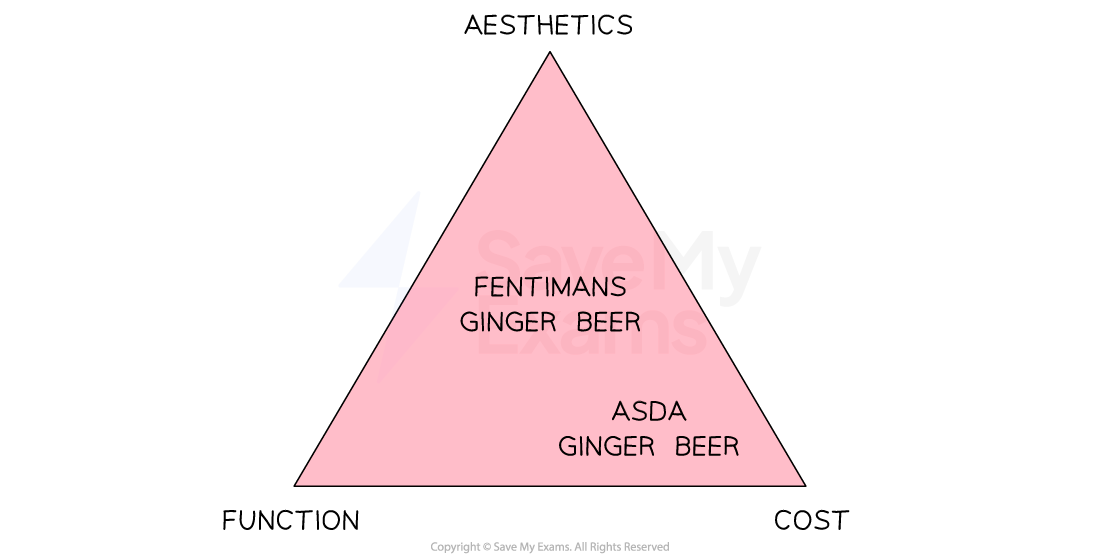The Design Mix
- The marketing mix (4Ps of marketing) provides a framework for businesses to create and implement successful marketing strategies
- The 4Ps represent the key elements of a marketing strategy: product, price, place, and promotion
- These four components work together to satisfy the needs and wants of a target market while achieving the company's objectives
- The product design mix refers to the combination of elements that make up a product's design
- These elements include function, aesthetics, and cost
- Products can be tangible goods (they can be held) or intangible services ( something the customer pays for but cannot necessarily touch e.g. web hosting service)
- Balancing the elements of function, aesthetics, and cost, helps the product design to be both functional and attractive, while also being cost-effective for both the manufacturer and the consumer
- Some manufacturers aim to balance all three elements e.g. Fentimans ginger beer is relatively affordable and is packaged in eye catching bottles and the product itself is very good quality
- Other manufacturers may focus on one aspect, more than the others e.g. Asda own brand ginger beer is produced at the lowest possible cost and sold to consumers at a very low price

Fentimans prioritises all three elements of the product design while Asda focuses on cost
Function
- The function of a product refers to its intended purpose and the specific tasks it is designed to perform
- A product's function is the most important aspect of its design because it determines how well the product will meet the needs of its intended users
- E.g. A multi-plug adaptor which breaks after one months use will to be seen by customers to fulfil its function
- E.g. A multi-plug adaptor which breaks after one months use will to be seen by customers to fulfil its function
Aesthetics
- Aesthetics refer to the product's visual and sensory appeal, including its form, shape, colour, and texture
- Aesthetics play an important role in attracting customers, creating brand loyalty, and generating word of mouth recommendations
- E.g. Apple products are well known for their pleasing looks and use of quality materials
- E.g. Apple products are well known for their pleasing looks and use of quality materials
Cost
- The cost of production must be considered when designing a product, as it directly affects the price point at which it can be sold
- A well-designed product should balance cost and value, ensuring that customers perceive the product as valuable enough to justify its cost while still maintaining profitability for the manufacturer
- E.g. Asda own brand ginger beer is very cheap to produce and is sold at a very low price


